|
I've been chatting about kids and art over on Instagram (you can find my posts saved in my story highlights under "Museums+kids," if you're interested), so I decided it would be a good time to resurrect this old blog post from back in 2015. Enjoy! Life's an art, wouldn't you agree? I love the idea of being a living work of art, while participating in the ongoing Creation by creating art of my own. And one of my favorite things about being part of this massive, timeless, glorious artwork is enjoying the work that other creators have put into it. As a mother, this has extended to sharing this joy with my children... ...but I think any of you who have ever actually tried to take a child to an art museum will know that this can be a challenge. As I've tackled it many times, with a general level of success, allow me to share some tips from my experience. TIPS FOR THE UNDER-TWO CROWD 1. Take babies to the museum. Trust me. It may seem like a daunting task, but this is actually the easy part. And if they become comfortable and familiar with museums now, they're more likely to continue to enjoy the experience as they get older. 2. Feed your hungry baby. If you meet your babies' needs, you set the tone for a happy experience. Even though I've been afraid of complaints, I've never had so much as a raised eyebrow when I found a quiet room of the museum in which to nurse my baby. But in case you're worried about any anti-nursing nastiness, you can steal my strategy and choose a quiet bench right under a medieval painting of a nursing Madonna or a Renaissance nude of a Grecian goddess. Go ahead, naysayers: try and complain. 3. Wear your little babies. If you don't absolutely need to bring a stroller into a museum, don't. (That time will come soon enough when you have a runaway toddler AND a baby.) You'll be cursing the unwieldiness and frustration of finding elevators in no time. Just make sure you have a sling or a front carrier, as most museums don't allow back carriers. 4. Let your toddlers toddle. You'd be surprised how engaging those long galleries are to little legs and minds. Just hold hands or stay close, because a museum chase is not something you want to add to your life experiences. 5. Look at the (painted) babies. Babies like nothing so much as other babies. Which is convenient, because most art museums are full of images of babies. 9 out of 10 times, as soon as I take a just-fidgety baby over to a painting of the Infant Jesus, she's all smiles and cooing. TIPS FOR THE TWO TO FIVE CROWD 1. Have reasonable expectations. You know what kids' attention spans are like. Don't expect a full-length museum trip with a three-year-old, because you are likely to be disappointed. Depending on my child, I like to frequent free or low-cost museums at this point (most libraries have tons of passes, which is an excellent option), so that you don't feel cheated when you only end up staying half an hour. I figure anything past that 30 minute mark is a bonus. 2. Make even limited museum time always fun. It's important to keep the museum experience a happy one so children never associate it with being bored or tired. With some guidance, and a firm set of rules, let your child wander from painting to painting that holds his or her interest. Ask lots of questions about the stories behind the paintings. Ask them to point out the colors they know. See if they can play detective and find paintings that look similar. Make it a game. 3. Speaking of games...really, make a game. My very best museum trick is this: make a treasure hunt list for your child. I draw simple pictures for my pre-readers, and create a list of items they'll be sure to encounter in the museum. This generally keeps them engaged for well over an hour. Here are some sure-fire choices for pretty much any museum with traditional artwork, but you can adapt to your needs: -a peach -a bird -a white flower -a pink flower -a blue dress -a baby -a dog -a fancy hat -a golden necklace -an apple -a red dress -a saint -a tree -clouds -the sea -a boat a mountain -a vase of flowers -a bowl -a cup -a window -a castle, or fancy house -a horse -a fish -a crown Also fun is printing out small images of actual paintings for them to find--just make sure you check in advance to make sure all the artwork is currently on view. TIPS FOR FIVE- TO TEN-YEAR-OLDS 1. Do some advance research. A. Study one or two artists whose work you know you will find in the museum. There's something so exciting about walking into a room and recognizing the work of a great artist. When you're studying, talk about the stories you see in the paintings as well as limited technical elements like which colors you see, the level of detail with which the artist paints (impressionistic versus realistic, for example), and general thematic elements in the paintings. There are super, super, super picture books about many artists that are an excellent place to begin. B. Read the stories behind some of the paintings you will see. Greek myths, bible stories, and Shakespearean plays have been beautifully represented in thousands of paintings over the centuries. Before visiting a museum, we like to brush up on these classics with some good "kid editions." Kids at this age will be thrilled to see a story they know "illustrated" on canvas--the story is more important to them than who painted it or what style it represents. Knowing the stories and recognizing the characters will help them realize that art is for them, too, not just for grown-ups. Some of our favorite books for this purpose are: Classic Myths to Read Aloud, by William F. Russell New Catholic Picture Bible (or any picture Bible… We've found each has its pluses and minuses and are still looking for a truly great one…) Tales from Shakespeare, by Charles and Mary Lamb 2. Allow them to help plan the visit. I want my children at this age to feel they "own" the experience of visiting a museum and aren't just being dragged around. I prevent that latter tragedy by allowing them to help me plan the trip and decide which parts of the museum (in a large museum such as the Met, at least) they want to see. They look at maps with me, help me develop itineraries, and even problem solve what they'll do when their little siblings get antsy. 3. Plan a longer visit, but schedule in breaks. My big little kids really want to spend a whole day at the museum, but (especially if we're visiting with younger siblings), they can't take it all in one stretch. It's easiest in the summer when you can hop outside--have you ever noticed that most museums have beautiful gardens and outdoor areas where little ones can run around or have a picnic?--but even in the winter you can run to the parking lot and have a snack in the car. 4. Bring a sketch book and pencil. Allow your children to actively participate in their study of and appreciation for art by inviting them to copy one of their favorite paintings. Make sure to remind them that you're not hoping for perfection--but that greatness depends on practice and lots of hard work. In our experience, it's best to start with something simple like a fruit or flower still life, as it will generally be easier to come up with a sketch that satisfies rather than disheartens. Even though this activity demands more patience and stillness and work from our kids than any other part of the day, it's absolutely their favorite. TIPS FOR A LARGE FAMILY WITH LOTS OF LITTLES One tip only: don't go alone. Definitely enlist your spouse's help. But also bring your little sister, your best friend, or your mom. Pay for their admission, if there's a cost...buy them lunch...promise them cookies...because you can't put a price on an extra pair of hands. Anyway, don't you want to share the fun? Do you have any expert museum-going advice? Any questions you'd like me to answer?
1 Comment
There are a few topics in books that get me so bristly I turn into a book reading porcupine. Homeschooling and Catholicism may seem like obvious bristle-inducing topics for me, but another that will bring out every bit of sharpness I possess is ART. Let’s just say I have strong feelings about it. And some pretty firm opinions. My husband is an artist; we talk about art all the time; we view and study and create art on a daily basis in my home. And the number one thing I can’t stand about so many books about art and artists is the way they are described as some sort of mystical, untenable, unapproachable things. Writers, of all people, should know that masterpieces are created by hard work, skill formed by hours of practice, and perseverance in the face of discouragement, difficulty, and distraction.
The first book in Carolyn Leiloglou’s new Restorationists series, Beneath the Swirling Sky, made my prickly, picky-about-art-books self want to cheer. And here’s the funny thing: in her story, art actually IS mystical and magical. Vincent comes from a long line of secretly magical art “Restorationists,” who use their skill to preserve, protect, and restore art that has been damaged by the evil Distortionists, who distort masterpieces of art to push their own agenda of eliminating truth and beauty. And yet, within that context, the author portrayed so perfectly the reality of art: it does have power. Artists are called. But they also work really really hard. Her story reminds those of us in the real world that the power Vincent possesses to create art that change the world is a power available to each one of us who chooses to work hard, develop skill, and be open to calling from a Creator who is greater than we are. Now that my inner porcupine has finished its cheering, here’s a little more about the actual plot of the story. From the publisher’s description: “After an experience he’d rather forget, Vincent is determined to be done with art. So when he and his little sister, Lili, spend spring break with their art conservator great-uncle, Vincent's plan is to stay glued to his phone. That is, until Lili disappears into one of the world's most famous paintings and Vincent learns his parents have been hiding something from Their family is the last of The Restorationists, a secret society with the power to travel through paintings—and a duty to protect them from evil forces. With Lili’s safety on the line, leaving art behind is no longer an option. Vincent must team up with his know-it-all second-cousin Georgia, wrestle with why his parents lied to him, and confront both his past and a future he never wanted. Young readers are invited into a captivating universe where paintings become a portal—and adventure and danger lurk beyond every canvas.” If you’re not already entirely hooked, allow me to share this endorsement from my ten-year-old daughter: “Beneath the Swirling Sky is one of my favorite books! I got so excited about it that almost all my siblings decided to read it, too. I really like drawing and might want to be an artist someday, so it was extra fun to read about a character who is an artist. Sometimes Vincent felt like he wasn’t a good enough artist, and I know how that feels. Reading this book made me want to keep trying even when it’s hard.” So, yeah, if you were wondering if kids would like this book... Yes, they absolutely love it. We can’t wait for Book 2! There are those in my home who await a new Eoin Colfer title the way some kids wait for Christmas. When we saw that he had a new book coming out and it was a Christmas book, I can only tell you that the squealing around here was epic.
I’d planned to write a more thorough review for you, but it’s a little hectic right now, so here’s the publisher’s description for you: Eleven-year-old Juniper Lane is thrown into a Christmas adventure like no other when she seeks the help of a mysterious woodsman living in her local park, who she suspects is Santa himself, and accidentally gets exposed to North Pole magic. Join a boisterous cast of characters―including a neighbor who always believed in Santa, a young reindeer in training, and a cutthroat crime boss out to steal Santa’s magic―on an unpredictable journey bursting with Eoin Colfer’s signature exuberance and merriment. Complete with cheerful, festive illustrations, this is a beautifully packaged tale of wonder, sure to inspire the Christmas spirit in the whole family. My thoughts: Juniper’s Christmas was SO MUCH FUN. It had all the cleverness and fast-paced action we’ve come to expect from the author of Artemis Fowl, with a little more focus on the heart as well. I also wanted to add that my kids have loved/are loving this book. I know sometimes reviews from teachers and librarians and writers are only so helpful—because we’re adults. We may be able to give you a good idea of whether our fellow adults will like a book—but will kids? Luckily, I happen to have a full range of readers living in my home, so when I can I will pass on their opinions to you as well! My sixteen-year-old zipped through Juniper’s Christmas before I got a chance, and she enjoyed it so much that she started reading it aloud to her younger siblings. The humor is lost a little on the 3- and 6-year-olds (and it’s a little scary for their tastes), but everyone eight and up is enthralled. Finally, a word to my Christian readers. I know some of you have varying opinions on books about Christmas and Santa Claus. So let me clarify for you: Juniper’s Christmas is a story in the vein of Tim Allen’s The Santa Clause; Santa is a magical elf, not a saint or even a human. There is no mention made of Christ’s birth that I can recall (other readers, please correct me if I’m wrong). On the other hand, the book does an excellent job (like so many other stories from A Christmas Carol to The Grinch) of using a secular story to highlight certain themes that are very much a part of a Christian’s understanding of our Holy Season, and it allows those important themes to reach a wider audience. In Juniper’s Christmas, the primary one would be a reflection on how we treat the homeless and outcast. And yet it tackles that heavy topic with other seasonally-appropriate themes of wonder, faith, joy, redemption, and sacrificial love. You may not find an explicit mention of God here. But you will certainly find Juniper’s Christmas imbued with one of the messages we believe He came into the world to teach us: love your neighbor as yourself. For all of you adults and teens and older middle grade readers who have loved Little House on the Prairie and hoped for a wider perspective on that time period and setting, I have a lovely book for you today!
A Sky Full of Song is the story of a Jewish family that flees persecution in Ukraine to make a new life on the North Dakota prairie. The middle child of five, Shoshana struggles with fitting in in her new school and new life, and wonders if it would be best to hide their Jewish heritage from her new schoolmates and friends. Here’s the publisher’s description: After fleeing persecution in the Russian Empire, eleven-year-old Shoshana and her family, Jewish immigrants, start a new life on the prairie. Shoshana takes fierce joy in the wild beauty of the plains and the thrill of forging a new, American identity. But it’s not as simple for her older sister, Libke, who misses their Ukrainian village and doesn’t pick up English as quickly or make new friends as easily. Desperate to fit in, Shoshana finds herself hiding her Jewish identity in the face of prejudice, just as Libke insists they preserve it. For the first time, Shoshana is at odds with her beloved sister, and has to look deep inside herself to realize that her family’s difference is their greatest strength. By listening to the music that’s lived in her heart all along, Shoshana finds new meaning in the Jewish expression all beginnings are difficult , as well as in the resilience and traditions her people have brought all the way to the North Dakota prairie. My take: This book is spectacularly written; highly compelling, deeply moving. I loved learning more about what it would have looked like for a Jewish family to transport their customs and traditions to the New World. Shoshana is a complex and very likeable character, and I loved the big family interaction with her siblings (super cute literary toddlers are my favorite). I would give a content warning before you hand this to young readers who loved Little House and want more of the same. The content is definitely more intense than anything you’d encounter in Laura Ingalls Wilder’s books, particularly the depictions of the violent persecution Shoshana and her family experience both in Ukraine and North Dakota. There are also a few scenes revolving around Libke getting her first period, and she and Shoshana are very scared until their mother explains what’s going on; while ultimately their mother’s explanation is very positive, I wouldn’t want my young reader to read the “scary” descriptions if we hadn’t had a chance to discuss this together yet. (I did wonder why the mother in the book wouldn’t have prepared Libke for her first period, and it seemed a little bit forced to add drama.) I’ll be handing this off to my 12+ readers, but your children may be ready at a different age. For more Marvelous Middle Grade Monday recommendations, check out Always in the Middle! Besides being amazing writers, do you know what Lewis Carrol, J. R. R. Tolkien, C. S. Lewis, T. H. White, G. K. Chesterton, Madeleine L’Engle, Brian Jacques, and Neil Gaiman (and many, many others) have in common? They were all deeply influenced by the writing of a humble Scottish minister and pioneer of fantasy literature, George MacDonald. Sarah Mackenzie, author of The Read Aloud Family, often discusses a concept she calls “reading upstream.” Basically, use your love of a certain book or author as a starting point to explore more books and authors. If you delve into the things that influenced that writer or work, you’re “reading upstream” and gaining a greater understanding of the thing you love—as well as finding new things to love! If you begin reading upstream of almost any fantasy author of the past century, you’re going to find yourself at a big river of inspiration called George MacDonald. I’ve read a few of MacDonald’s works aloud to my family—they’re particular fans of The Princess and the Goblin illustrated by Arthur Hughes. But it can be hard to find some of his lesser-known works, so I was thrilled when I discovered that Word on Fire Spark just came out with a beautiful new edition of The Golden Key, including two more of MacDonald’s lesser-read fairy tales, The Light Princess and Little Daylight. Just look at this beautiful cover! And the illustrations by Anastasia Nesterova are perfect for these stories (which is saying a lot, considering that MacDonald has been illustrated by some of the greatest artists of the golden age of illustration). While each of the stories in this collection are fairy tales rich with symbolism, they are very different from one another. The Golden Key is about two neglected children who stumble into a fairy world and must go on a quest. The Light Princess is a wry and humorous story about a princess whose gravity (both on a physical and metaphorical level) has been stolen by an evil witch. Little Daylight highlights MacDonald’s humor as he creates a topsy-turvy verson of Sleeping Beauty, in which the princess is cursed to sleep during the day and wax and wane like the moon when she awakes at night. For those of us who have the pleasure of reading MacDonald in a post-Tolkien age, it’s impossible to read without Tolkien’s thoughts on fairy stories intruding (pleasantly) into our minds. Take this quote, for example, from his essay On Fairy-Stories: "It was in fairy-stories that I first divined the potency of the words, and the wonder of things, such as stone, and wood, and iron; tree and grass; house and fire; bread and wine." You don’t have to search hard in MacDonald’s stories to find this potency and wonder. But what struck me most on my current reading was another fairy story element Tolkien wrote of at length: that of the comfort of finding true joy and happy endings. In today’s world, you only need to pick up your phone to find a world full of unhappy stories. So perhaps fairy stories, with their reminder that happy endings are possible and true, are more important now than ever. Did you ever hear the Albert Eistein quote about fairy tales? “If you want your children to be intelligent,” he said, “read them fairy tales. If you want them to be very intelligent, read them more fairy tales.” Tokien or Lewis or L’Engle might adapt that for today’s audiences. I certainly will: “If you want your children to be resilient… to be faithful… to be hopeful… to be kind… read them fairy tales. If you want them to be saints and heroes, read them more fairy tales.” The Golden Key is a good place to start. Here is the link to order from Word on Fire Spark (I think it’s on sale right now!): https://bookstore.wordonfire.org/products/the-golden-key For more Marvelous Middle Grade Monday recommendations, check out Always in the Middle! I am so, SO excited to share with you all a book I'd been dying to read since I first heard of its existence. The Luminous Life of Lucy Landry won't be released until March 5 of next year, but I hope you all start pre-ordering and requesting your libraries to buy it as soon as you can, because it's beautiful and poignant and old-fashioned and wonderful.
Here's the publisher's description: Lucy, a spirited French-Ojibwe orphan, is sent to the stormy waters of Lake Superior to live with a mysterious family of lighthouse-keepers—and, she hopes, to find the legendary necklace her father spent his life seeking… Selena Lucy Landry (named for a ship, as every sailor’s child should be) has been frightened of the water ever since she lost her father at sea. But with no one else to care for her, she’s sent to foster with the Martins—a large Anishinaabe family living on a lighthouse in the middle of stormy Lake Superior. The Martin family is big, hard-working, and close, and Lucy—who has always been a dreamer—struggles to fit in. Can she go one day without ruining the laundry or forgetting the sweeping? Will she ever be less afraid of the lake? Although life at the lighthouse isn’t what Lucy hoped for, it is beautiful—ships come and go, waves pound the rocks—and it has one major It’s near the site of a famous shipwreck, a shipwreck that went down with a treasure her father wanted more than anything . If Lucy can find that treasure—a priceless ruby necklace—won’t it be like having Papa back again, just a little bit? But someone else is hunting for the treasure, too. And as the lighthouse company becomes increasingly skeptical that the Martins can juggle Lucy and their duties, Lucy and the Martin children will need to find the necklace quickly—or they may not have a home at all. The Luminous Life of Lucy Landry is a timelessly sweet tale of found family from rising Ojibwe voice Anna Rose Johnson, author of NPR Best Book of the Year The Star That Always Stays . Perfect for fans of L.M. Montgomery and Karina Yan Glaser! I'd like to say that if any of you aren't at least a little bit tempted by a description that encompasses 1) a heroine reminiscent of and L. M. Montgomery character, 2) a big family story, 3) a treasure hunt, and 4) A LIGHTHOUSE… well, you might be human but are you actually a happy person? ;) Those elements make me very, very happy as a reader. They really made this story so beautiful and so much fun. I won't write at length today about each of the lovely elements of Lucy Landry. But I do want to focus on the big family aspect, as that's solidly in my wheelhouse. A lot of big family stories capture the chaos and fun of a family of many siblings. Many get the sibling rivalry spot on, and most portray the firm bond of love between brothers and sisters. Few, in my experience, capture the way that it's not just the good things about us, but also our flaws and failures and annoying little habits that allow us to help each other grow. Family is a school of love and a school of life. Without rubbing up against each other's rough edges, we wouldn't have the chance to smooth out our own. The Luminous Life of Lucy Landry portrays this aspect of big family life more accurately than any story I've ever read. Lucy is a very flawed character. The Martins are, too. They don't get along very well at the onset, and it's not just a misunderstanding they grow out of—it's their flaws, front and center, there for everyone to see. But Lucy and the Martins are also, well, wonderful. They are more virtuous than they are flawed, and those virtues do a lot to ease that work of softening edges. And of course, you can't go wrong when you throw in a good adventure and a treasure hunt! As I said, The Luminous Life of Lucy Landry is available for pre-order now, and releases this coming March. In the meantime, you can check out Always in the Middle for more Marvelous Middle Grade Monday recommendations! I remember writing a review years ago (can't track it down now) in which I said I'd read a grocery list if Kate DiCamillo wrote it. I stand by that sentiment. Kate DiCamillo has the ability to take the most basic, simple of stories and make it captivating.
I bring that up only because it was rather hard to pin down what is so wonderful about Kate's newest book, The Puppets of Spelhorst. The ostensible main characters of this original fairy tale are puppets, therefore they cannot make choices or—in themselves—move the action forward. They move from the hands of one person to another, hardly allowing the reader the pleasure of following any human character just as you start to really care about them. The story is simple. The entire drama unfolds in under 150 small, highly illustrated pages. And yet… it's no grocery list. Kate DiCamillo's storytelling is incisive. With simple language and not a single wasted word, she gets to the heart of what it means to be human, what courage looks like, what beauty can do to us, what it means to be part of a story. She masterfully weaves together the simple, passing tales of each of the humans the puppets encounter as the toys look for their own story, and only the reader can really see the deeper story, the deeper roles they play. To borrow a quote from the book itself, the feeling I had the entire time reading it was, "It's all so beautiful… I wonder what will happen next." Finally, I can't neglect to mention Julie Morstad's gorgeous illustrations. They complement and enhance the simplicity and beauty of the author's writing perfectly. A complete delight. So, friends, do you know what you’re doing on March 12 of next year?
Let me tell you. You’re going to get a package on your doorstep. And you remember, “Oh, yes, today is the day my pre-ordered book comes! Faith Elizabeth Hough loved this one so much I just couldn’t resist the chance to have it the day it comes out.” You tear open the packaging, and pull it out. The Funeral Ladies of Ellerie County, by Claire Swinarski. It is gorgeous. “Just as beautiful as Faith said it was!” you think. But you’re a smart, experienced reader, so you won’t be swayed by something so superficial as a gorgeous cover. (You’re totally swayed, but your secret is safe with me.) So you think, “I’ll just read a page or two to see if it’s as good as she said. Then I’ll make a cup of tea and really settle in.” You open the cover and slip into the world of Ellerie County, Wisconsin, a place where the winters are snowy and cozy and the sumers are spent on the docks and the people come together to help one another through thick and through thin. A place so vivid it’s almost a character in its own right. But the characters! The characters are even better. There’s Esther, who reminds you a bit of your own grandmother, with her steadfast faith and the perfect pies and casseroles she whips up with her “Funeral Lady” friends for each and every funeral at the town’s little Catholic church. There’s Iris, her granddaughter, who is thoroughly modern with her Instagram savvy and her business plans, but who also is happy to fill in for her mom’s hour of Eucharistic Adoration every week. You get excited right along with them when Ivan Welsh, the Food Network celebrity chef, arrives in town for a funeral, along with his sassy teenage daughter and kind but haunted son, Cooper. At this point you realize you’ve made some good choices in your life, because somehow a cup of tea has appeared in your hand and you don’t even remember how it got there. (You’ll thank them later.) You enjoy each sip, even while wondering what that chai would taste like with a hint more cardamom, or perhaps accompanied by a slice of apple pie. But you can’t dwell on it long, because Esther's kind heart got her in trouble, and Iris has a plan to help, but it’s kinda crazy and she might be falling in love with Cooper, and he’s got issues to deal with and what’s going on with Ivan, anyway, and can Esther’s good heart and perfect pie crust really save the day? Somewhere mid-description of a gorgeous culinary creation by either a midwest grandmother or a Food Network celebrity, you realize you probably should eat something (and, for some of you, make a meal for those wonderful little humans that have been uncharacteristically self-directed in their play or schooling all day). You prepare the meal with exquisite attention to each detail, because your reading has reminded you that the little details matter and that food is a pretty darn good way to show love. After your meal, you’re dying to get back to the book—but you pause. Because it’s also made you think a little more carefully about the time you spend with those little humans or other people around you. You muse, “If I take anything away from this book, it’s going to be that we have to be there for one another. We have to love and we have to forgive, but first we just have to show up. With a casserole or a book to read or arms open for a hug.” So you choose the right thing, and you hug your humans, and you just might slip into bed and read under the cover until you turn the very last page. Sometime around March 13, you order a few extra copies, because The Funeral Ladies of Ellerie County is the perfect choice for your brilliant idea of a three-generational-book club with your grandma and mom and sisters. While you’re on the computer, you think, “I should send a quick note to thank Faith for convincing me to click on that pre-order link back in September. What a difference it made!” But instead you remember what Faith said, and you send a quick email off to the author, Claire Swinarski, thanking her for the time and energy and heart she put into writing such a beautiful book. Because imagine what a bleak March 12 it would have been without the chance to lose yourself in a perfect pie and a midwest town and your new favorite story. Besides, Faith might be busy re-reading her shiny new copy, if she's not making a pie. I'm sure I wasn't the only one to do a little happy dance in my mind when I found out there's a new book coming out in September from Kate Albus, author of A Place to Hang the Moon. Any of you fellow happy dancers? Kate's debut novel completely stole my heart and won an honored place on my shelf, so I couldn't wait to see what she'd write next!
Like A Place to Hang the Moon, Kate's second book is set during the Second World War, but Nothing Else But Miracles takes place on the other side of the pond, in Manhattan's Lower East Side. Twelve-year-old Dory Byrne and her brothers Fisher and Pike have to fend for themselves while their young father is fighting overseas. They rely, as their father told them to, on their neighborhood—their community in Manhattan that has always been there for them. But when their friendly landlord suddenly dies, their security is threatened. Luckily the neighborhood steps up in an unexpected way—Dory discovers an old, abandoned hotel, accessed only through a rickety hand-operated elevator, above their friend's restaurant. Hiding away there provides them the secrecy and safety they need when their father goes missing—all the while their neighbors continue to provide them with the love and help they didn't even know they needed. Did I really have to say more than "old, abandoned hotel" for you to know I'm obsessed about this story? I mean, HOW COOL IS THAT? (And it's based on a real place!) Add it to my list with Bag End, the Metropolitan Museum of Art, and the Boxcar Children's boxcar, of "places books convinced me I want to live." But beyond the evocative setting, Dory's story has a heart as big as the Big Apple itself. Her struggle to find safety in insecure times, to choose love over resentment, and to cling to hope when all seems lost are what make Nothing Else But Miracles a truly excellent book, and one that you'll want to share with everyone you know. Nothing Else But Miracles releases September 5—trust me, you want to preorder it now so you can read it as soon as possible. Many thanks to Netgalley and Holiday House for providing me an electronic review copy in exchange for my honest opinion. For more Marvelous Middle Grade Monday recommendations, check out Always in the Middle! Book to Share: Hope in the Valley, by Mitali Perkins (My final read for Vintage Kidlit Summer!)8/18/2023 It’s not every day that one of my all-time favorite, overlooked classics of a book is mentioned in a new middle grade novel. When Pandita Paul, the main character of Hope in the Valley, by Mitali Perkins, discusses Maud Hart Lovelace’s Emily of Deep Valley with the elderly man she has befriended at an assisted living facility, my little readerly heart squealed.
But it’s REALLY not every day that a new middle grade novel actually reminds me of one of my all-time favorite, overlooked classics of a book. Throughout Mitali Perkin’s story—from the title on out—little nods to Emily of Deep Valley come out in theme and words and style. Most noticeably, Pandita’s growth into a young woman who is confident enough both to speak her mind and to change her mind (and isn’t that the harder of the two?), echoes Emily’s growth in Lovelace’s novel. Is it a retelling? Not in the least. Will Emily’s fans rejoice to find a modern book full of the same heart and strength and old-fashioned goodness? Absolutely. Here’s the publisher’s description: Twelve-year-old Indian-American Pandita Paul doesn't like change. She's not ready to start middle school and leave the comforts of childhood behind. Most of all, Pandita doesn't want to feel like she's leaving her mother, who died a few years ago, behind. After a falling out with her best friend, Pandita is planning to spend most of her summer break reading and writing in her favorite secret the abandoned but majestic mansion across the street. But then the unthinkable happens. The town announces that the old home will be bulldozed in favor of new―maybe affordable―housing. With her family on opposing sides of the issue, Pandita must find her voice―and the strength to move on―in order to give her community hope. “Activism” is a charged word right now. Everywhere I look, it seems like someone is picking a fight in the name of “activism” instead of learning to sit down with their neighbor and see their point of view. Sometimes it seems like a very modern idea, but old books from Emily of Deep Valley to Rose in Bloom—not to mention everything Dickens ever wrote—remind us that activism is a necessary part of grappling with the injustice that has existed in the world since the fall of man. Just like those old stories, Hope in the Valley is about a young woman who wants to make the world a little better, who sees a wrong and is compelled to leave her comfort zone in order to right it. But her activism is a far cry from screaming protests and hard-headed insistence. In fact, it’s the time that Pandita spends with people who disagree with her that most influences and informs the way she makes her case. Any of us who have struggled with how to stand up against the evil in the world without adding to it will be inspired by the example she sets for us. Auntie Mitali, thank you. You’ve written the classic story we need in 2023 and for generations to come. (Note: I happened to read this during my last week of the Vintage Kidlit Summer reading challenge that Anna Rose Johnson and I are hosting. I didn't realize when I started how perfectly it would fit into the week's theme: A New Book with a Vintage Feel! I'll have a recap of my summer reading very soon, but in the meantime, find this lovely book!) |
About meHi! I'm Faith. I blog about books and creativity, family and faith. Welcome! Archives
November 2023
Categories
All
|
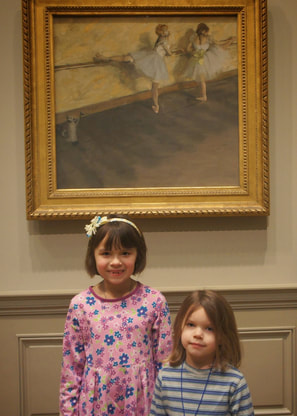
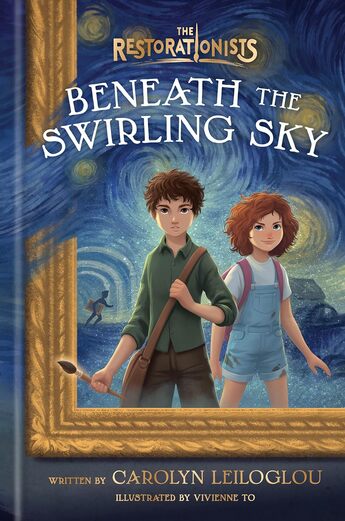
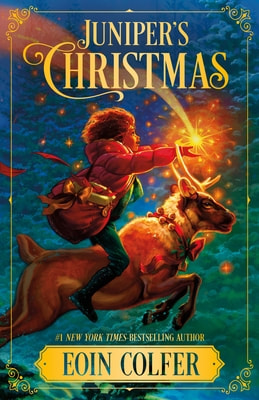
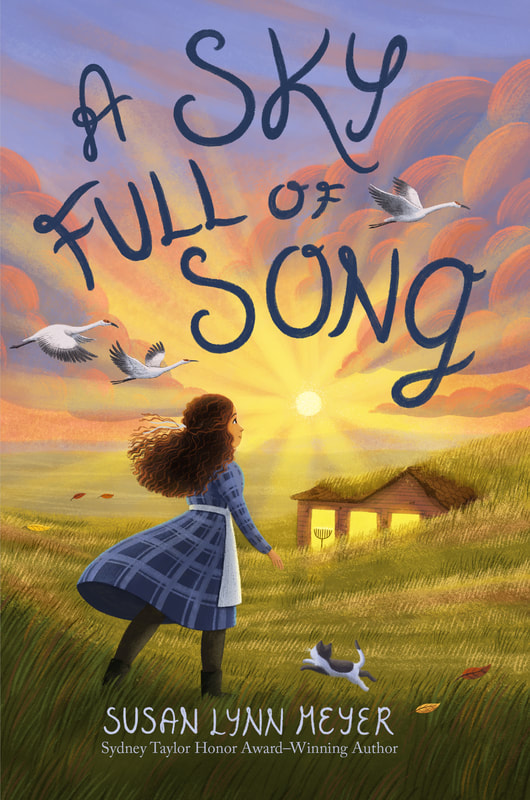
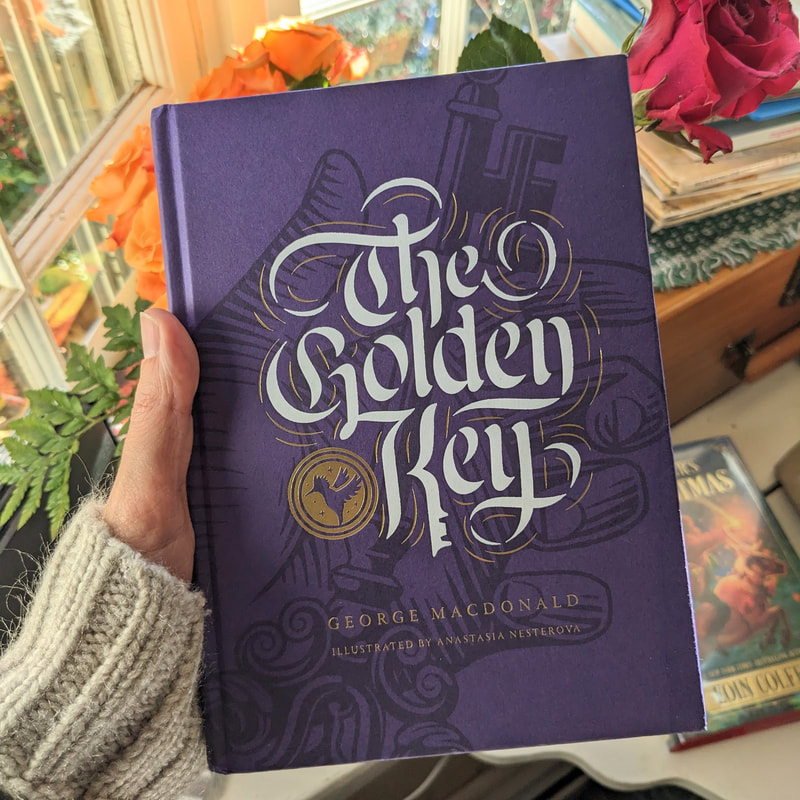
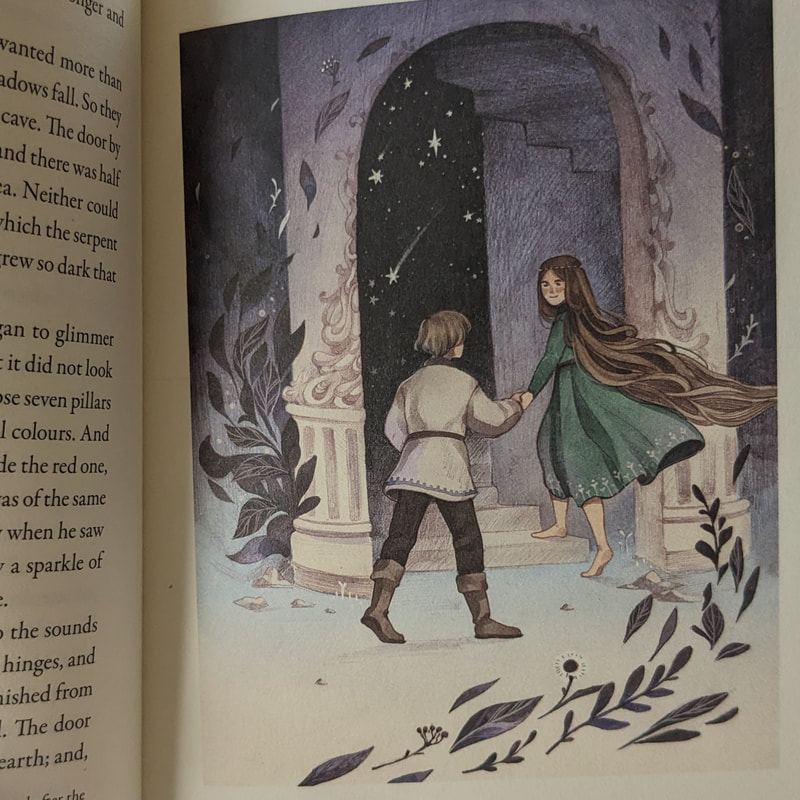
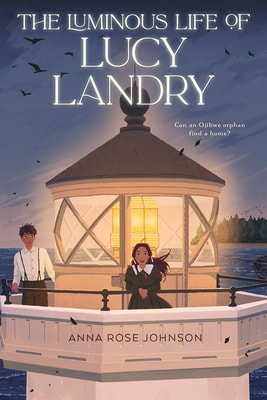
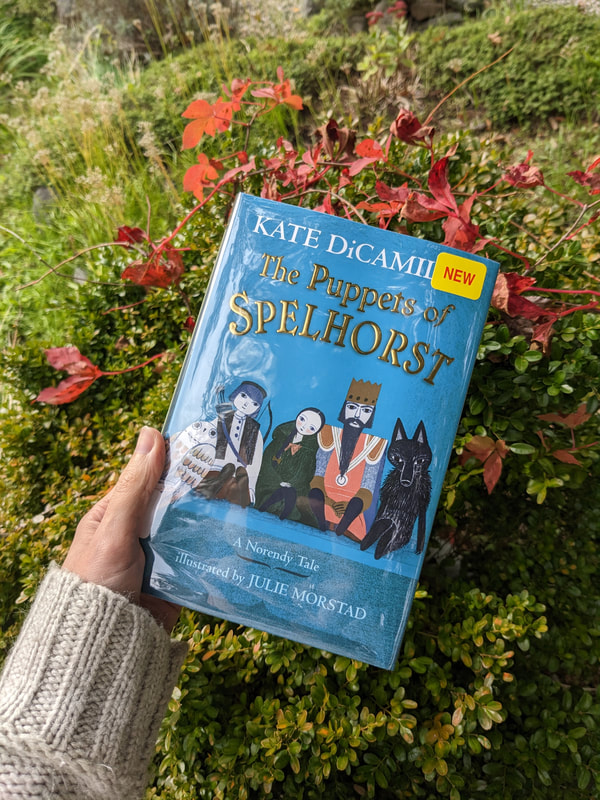
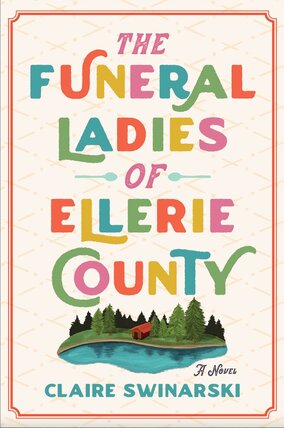
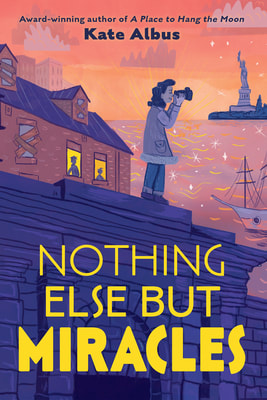

 RSS Feed
RSS Feed